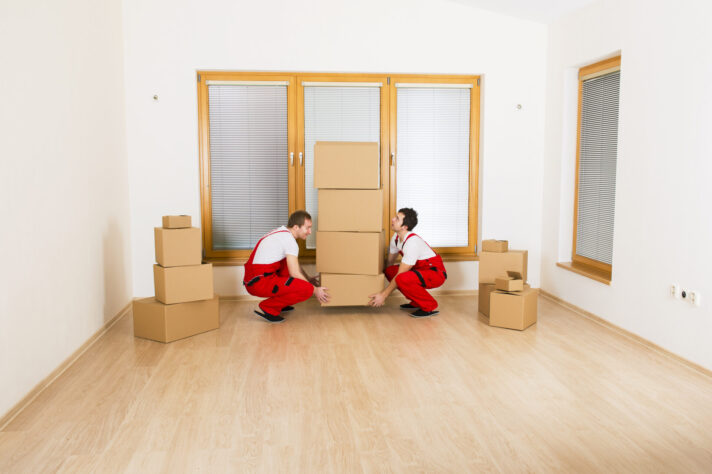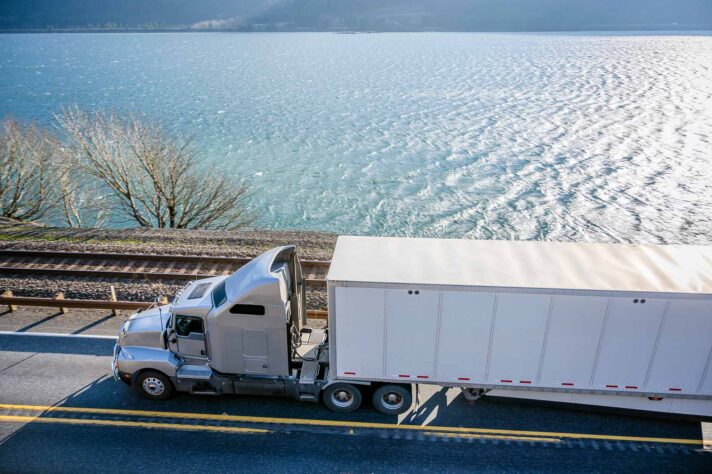To begin with, you can’t forget to pack your essentials, such as important documents. Clothing should be packed based on the season and weather conditions of your new location. Essential electronics and chargers, along with basic toiletries, should be easily accessible for the journey. Remember to box up valuable items like jewelry, antiques, and expensive electronics separately, and prepare kitchen items and furniture properly. Ensure you make a thorough inventory before getting a cross-country moving service, so you can track everything.
The Ultimate Packing List for Moving Cross-Country – What You Can’t Forget
The logistics of boxing up your life and deciding what to keep is no small feat. We understand the importance of remembering every single item – which is why we decided to create an ultimate packing list. With our packing guide, rest assured that no essential items will be left behind in the chaos.


What Is a Packing List?
A packing checklist is a detailed document that enumerates all the items that are packed for transport. It serves as a comprehensive relocation checklist of all the items you want to keep and move to a new home. This can range from large pieces of furniture to small personal items and important documents.
Why Is Making a Packing List Important?
A boxing-up list is incredibly useful for keeping track of your possessions when organizing a relocation, ensuring nothing gets left behind or lost. It can also help you pack efficiently by categorizing items by room or function and prioritizing what needs to be packed first.
Additionally, making a packing list can also help you identify items you may want to discard, donate, or sell before the relocation date. It allows you to keep track of all your belongings and provides a clear record of what you own, which can be especially helpful for insurance purposes or in case of loss.
In addition, a well-made checklist can help you estimate the size and cost of your relocation, as it gives you a clearer picture of the volume and nature of the items you’ll be transporting. This can be particularly helpful when you are getting quotes from cross-country moving companies or if you are deciding what size of relocation truck you need.
Create a Timeline for Your Move Before Making a Packing Checklist
A relocation timeline should include information about all tasks that need to be completed before, during, and after the relocation and when they should be done. This includes tasks such as getting long-distance moving services, transferring utilities, changing your address, and unpacking after the move. Having a clear timeline can help you stay organized and ensure that all tasks are completed in a timely manner. It can also reduce relocation stress by providing you with a clear plan of action.


Declutter and Get Rid of Unnecessary Items Before Anything Else
Decluttering and downsizing for a relocation involve sorting through your belongings and deciding what to keep. It’s a great opportunity to get rid of unnecessary items that have accumulated over the years, which would otherwise take up valuable space and add weight (and, therefore, cost) to your relocation. Remember, items that haven’t been used for a year or more are prime candidates for the leaving-behind piles.
For items of value that you no longer need, consider selling them through online marketplaces, garage sales, or consignment shops. For belongings that are still in good condition but not worth selling, donating to different charities and organizations such as Salvation Army, shelters, or thrift shops is a great option. Finally, anything broken, worn out, or otherwise unusable should be discarded responsibly.
Decluttering can make boxing up, unpacking, and settling into your new home quicker and more efficient. Plus, it’s a liberating process that can bring a sense of refreshment and renewal as you prepare for this new chapter in your life. If you’re not sure how to start with it, take a look at some valuable tips from the video below:
Make a Packing List of Essential Items
Before you start listing every little thing you plan to move, it’s crucial that you deal with relocation essentials first. These are the things that you want to keep with you at all times, as many of them are either irreplaceable or used regularly. With that in mind, let’s go over all the essentials you’ll want to box up separately.
Important Documents and Records
One of the first categories to consider when creating your boxing-up list is important documents and records. These should be kept accessible and secure during the relocation process. This category can include:
- Passports, birth certificates, and other identification,
- Financial documents (bank statements, tax records, and so on),
- Real estate documents (lease, property deeds, and the like),
- Health records (medical, dental, and vaccination records),
- Insurance policies,
- School records,
- Employment records,
- Marriage and divorce certificates.
Medications and First Aid Kit
Your health and safety should be a top priority during this period. Be sure to pack prescribed medications and over-the-counter medicine you use regularly, as well as a basic first aid kit with bandages, antiseptic wipes, tweezers, and pain relievers. Remember to keep medications in their original containers to avoid confusion and have the relevant information on hand if needed.
Basic Toiletries and Personal Care Items
To ensure your comfort during the relocation, make sure to pack basic toiletries and personal care items, including:
- Toothbrush and toothpaste,
- Deodorant,
- Soap or body wash,
- Shampoo and conditioner,
- Towels.
Remember that if you’re traveling by air, you’ll need to abide by TSA guidelines for carrying liquids, aerosols, gels, creams, and pastes.
Valuables and Sentimental Items
For your peace of mind, it’s advisable to keep your valuables and sentimental items with you during the relocation. These might include jewelry and watches, family heirlooms, or special keepsakes or collectibles. If you have valuable items that are too large to take with you, consider insuring them.
Don’t Forget Clothing and Accessories
When packaging clothes and accessories for a cross-country relocation, there are several factors to consider to ensure you have everything you need. You’ll want to take into account the climate and weather of your new location, the distance of your move, and any special clothing needs you may have for work or activities.
Check the weather forecast for your new location. If you’re relocating to a colder climate, make sure you have enough warm clothes easily accessible. Conversely, if you plan to move to a warmer area, keep a set of lighter clothing handy. Additionally, pack separate clothes to wear during the relocation and the first few days in your new home, considering you might not have time to unpack everything immediately.
Keep a pair of comfortable shoes for the relocation day and pack the rest. Consider the weather, as well as any special needs (work boots, running shoes, and so on). On top of that, make sure you don’t forget belts, scarves, hats, gloves, and jewelry. These can often be overlooked but may be needed immediately upon arrival.


Write Down the List Of Kitchen and Dining Items
You also need to think about packaging kitchen items. Begin with basic cookware and utensils and start boxing up pots and pans, baking sheets, mixing bowls, and kitchen tools like spatulas and tongs. Don’t forget essential dining items – pack plates, cutlery, bowls, glasses, and mugs. Cutting boards and a set of sharp kitchen knives are crucial for meal preparation, as are serving utensils and measuring tools.
Don’t forget about your kitchen appliances and small electronics, either. These may include a microwave, toaster, blender, food processor, coffee or espresso maker, electric kettle, handheld or stand mixer, and potentially a slow cooker, pressure cooker, or rice cooker. Remember to box up these items carefully to protect delicate parts, using the original packaging if available.


Electronics and Entertainment Are Not Easily Forgotten but Write Them Down Still
When packaging your computers, laptops, and tablets, you need to ensure their safety, as they are likely some of your most valuable items. If possible, use the original boxes and packaging. If not, wrap each device in bubble wrap or a soft blanket, then place them in a sturdy box with additional padding. Don’t forget your chargers, external hard drives, mice, keyboards, and other peripheral devices. Consider backing up important files before the relocation, just in case. The same goes for packaging electronics such as televisions and gaming consoles.
When having a long cross-country relocation ahead of you, remember to pack some entertainment for the journey, as well. Download movies, shows, music, audiobooks, or podcasts to your smartphone or tablet ahead of time, especially if you’ll be traveling through areas with spotty internet service. Don’t forget your headphones! Lastly, consider packaging books, travel games, or other non-digital entertainment options.


Furniture and Household Goods Should Also Be Brought to a New Home
Transporting furniture and household goods is an essential part of a cross-country move. These items are not just functionally important but also make your new apartment feel like home. When considering furniture and household goods, there are a few key points to consider.
For starters, if you plan on relocating large items, they often need to be disassembled for ease of transport. Take apart beds, tables, and other bulky items, and keep all screws and hardware in a labeled bag. If you’re bringing large appliances, ensure they are clean and dry to prevent the growth of mold and mildew during transit.
Box up smaller decor items like picture frames, lamps, and mirrors in boxes with plenty of padding to prevent damage. Additionally, don’t forget about outdoor furniture and equipment. Clean these items to remove dirt and pests before loading them.
Gather Essential Packing Supplies
In every guide to packing for a move, gathering the right supplies is a critical step in ensuring a smooth and efficient relocation. Here is a list of essential materials you’ll likely need:
- Boxes – you will need a variety of sizes,
- Bubble wrap – essential for wrapping and packaging fragile items. It adds an extra layer of protection and reduces the chance of breakage,
- Packing paper – another great material often used for wrapping items, but also for filling empty spaces in boxes,
- Tape – essential for securing your boxes,
- Labels or markers – using relocation labels will make unpacking much easier,
- Relocation blankets – these can be used when you need to relocate furniture and large items and protect them from scratches and dents,
- Ziploc bags – handy for keeping small parts (like furniture screws) organized.
By having these supplies at the ready, you’ll be well-equipped to box up all of the belongings from this checklist and ensure their safety during the transit.
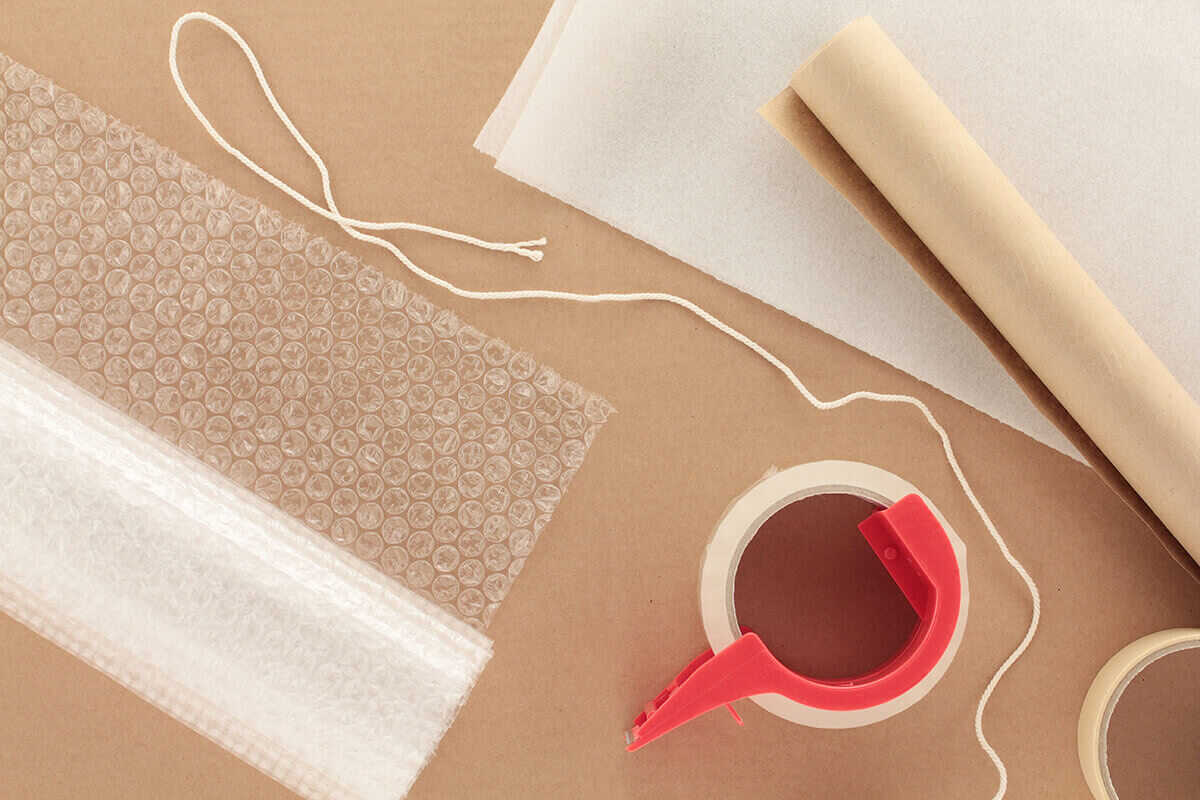

Choose Your Preferable Packaging Strategy
Planning a relocation to another city can be a stressful task, but by applying certain strategies, you can make it more manageable. When you’re done with your individual packaging list, you need to decide how you’ll box up all of your belongings. Keep in mind that one of the most efficient ways to pack for a move is to tackle one room at a time. This method keeps items from the same room together, which makes unpacking easier. It also gives a sense of accomplishment as you can see your progress, one room at a time.
Organize and Label Boxes
When boxing up, it’s best to keep items from the same room together. This way, when you’re unpacking, all of the items that go in the same room are in the same boxes, making the process quicker and easier. It’s a good idea to use different colored markers or colored stickers to label boxes from each room.
You should also write a general description of the contents on each box and mark boxes containing breakables as “Fragile.”This will help ensure these boxes are handled with care. If you don’t need to relocate in a hurry, numbering each box and keeping a corresponding list of the contents can be very helpful, especially for items you might not use right away. This way, if you need to find something later, you can simply check your list rather than rummaging through multiple boxes.
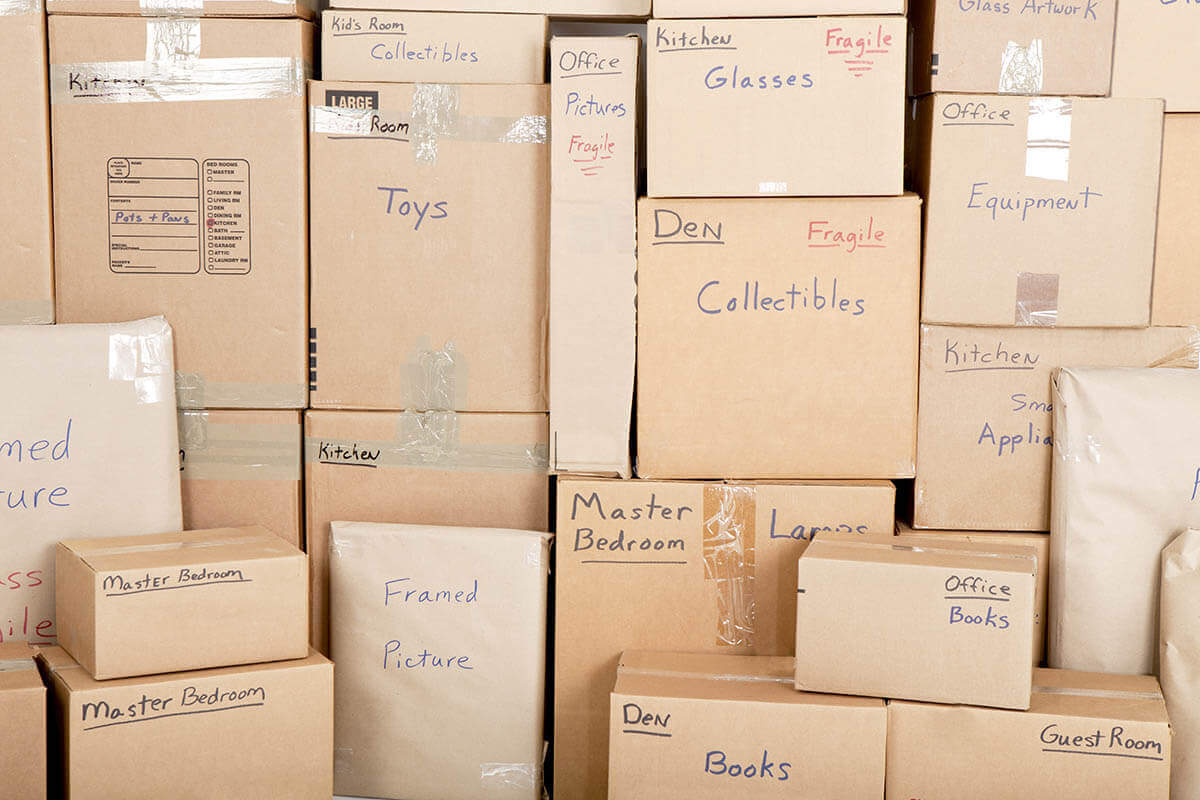

Hire Professional Cross-Country Movers to Help You With Heavy Lifting
Relocating across the country can be a tiring task, especially when it comes to handling heavy furniture and delicate items. Hiring professional long-distance movers, such as Cross Country Moving Company, however, can greatly alleviate this burden by ensuring that your belongings are safely and efficiently transported to your new home. These experts have the training and equipment to lift heavy items, pack fragile pieces properly, and transport all of the items from your packaging checklist through challenging routes damage-free.
Use More Than One Cross-Country Moving Service and Ease Your Relocation
When it’s time to relocate, keep in mind that some companies offer comprehensive cross-country moving services that go beyond merely transporting your belongings. For example, if you need to vacate your current home before the new one is ready or simply have too many items to move at once, you are able to get storage services. On the other hand, car shipping professionals can transport a vehicle for you, saving you time and wear and tear on your car.
Boxing up can be one of the most time-consuming aspects of moving, which is why you can decide to choose packing services and ensure all of your items are packed securely and efficiently. Remember, cross-country movers are experienced and trained to handle the logistics and physical labor involved in a relocation, allowing you to focus on the exciting aspects of starting fresh in a new location.
Packing
Our expert moving teams are trained to ensure the safety of your personal belongings.

Auto Transport
Cross Country Moving Company is the most trusted name in auto industry in the country.
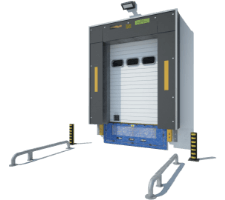
Storage
Cross Country Moving Company is the most trusted name in auto industry in the country.
Follow Our Guide to Packing for a Move, and You Won’t Forget a Thing
With a strategic approach – from early decluttering and creating a boxing-up checklist to thoughtful labeling – you can ensure that all your belongings reach your new home safely. However, remember that you don’t have to do it all on your own. As you start this exciting new chapter of your life, consider investing in our professional long-distance moving company. You’ll gain peace of mind knowing your move is in expert hands, leaving you free to focus on settling into your new home. Take the first step today! Contact us and get your quote – your future self will thank you!
